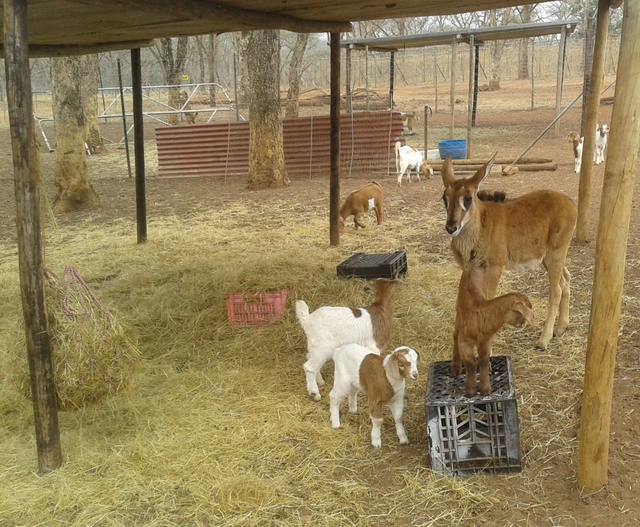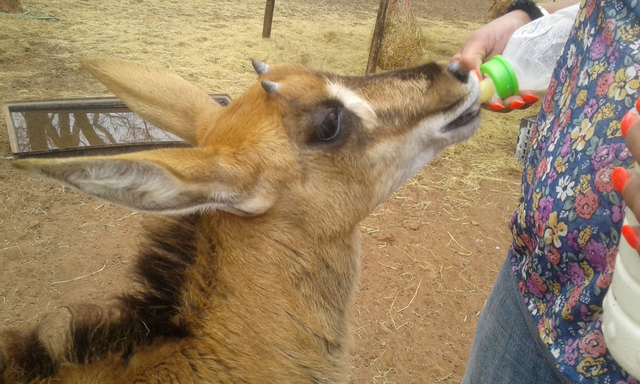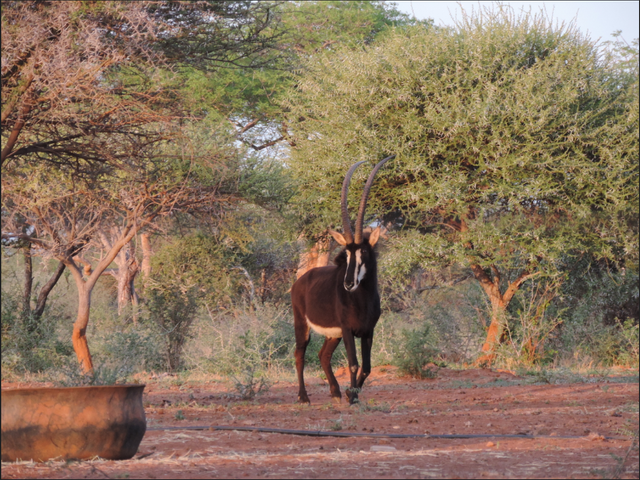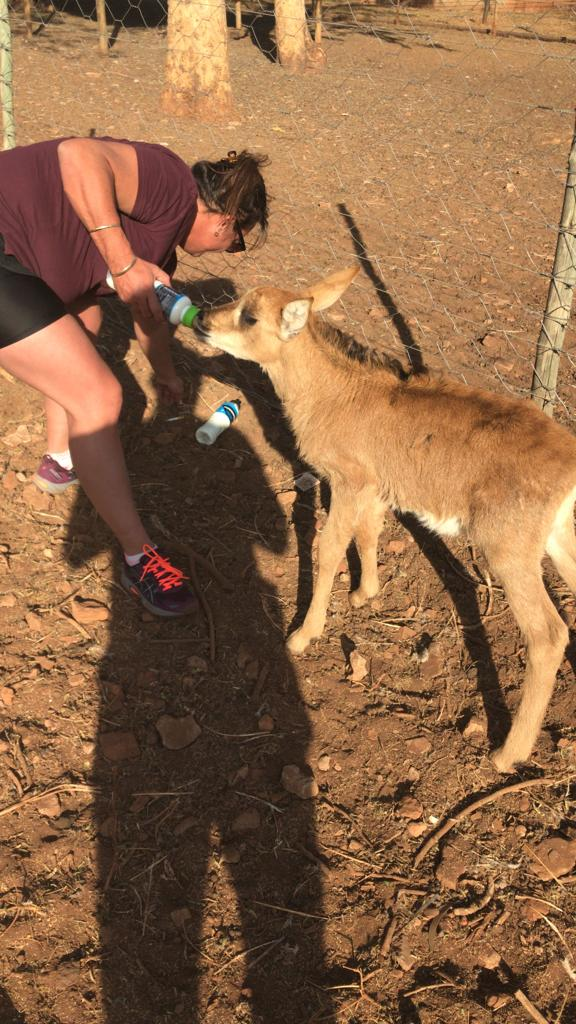Let Me Introduce You To Maverick
As many of you might know, I always have a finger in the pie when it comes to conservation work, and as a part of that I try to get involved when it comes to wildlife rescues as well, and as such I have immense respect for other people who do the same.
This is just a short introduction to one such rescue that I came across while visiting on one of my friends farms.
This is Maverick:

Maverick is a young sable, that came to their farm as a tiny orphan, no more than two hands high, and not much bigger that the baby goats he currently shares his camp with. He was found in the bush weak and dehydrated, and could barely stand on up on his own. Maverick was immediately taken in and examined, and then placed on a diet of freshly milked goat milk, at first he refused the bottle and getting him to take in any fluids was quite the struggle, but as he grew stronger feeding became easier.
Maverick has been at his new home for quite a few months and still gets his bottle twice daily - he spends his days in the 'goat nursery' where all the goat lambs stay while their mothers are out grazing. Feeding this feisty little sable now comes with a whole new set of challenges, as he can get quite impatient if his bottle is not ready in time, and he would often rip the teat right off the bottle and then run away with it - making for a very interesting game of cat and mouse. Also these antelope, would often nudge at their mothers teats with their heads while suckling, and given that fact that Maverick is starting to grow his soon to be majestic horns, as well as taking into account his current and ever increasing size as well as his strength, I am sure how you can see that this is becoming a slight problem.
In the picture below you can see his tiny little horn spuds evolving, this picture was taken while Maveric was being fed his morning bottle.

Maverick's horns will surely not stay that small forever, as he ages he will start wearing a darker fur, while his horns will carry on growing with him until he boasts with an immaculate set of curved and ribbed horns. This will inevitably become a blessing and a curse for him, as once he is back in nature this will become his first line of defense against predators, but it will also make him a target for illegal hunting.
Although Sables are not endangered, and they have a sustained population, the loss of habitat due to the expansion of agriculture land including the farming of livestock has caused Sable to be eliminated from extensive areas of their former range.and these majestic beasts are often poached for their meat and or as a trophy because of their imposing horns. This might not be a problem at the moment, but it is more than likely to become a problem for the wild Sable population in time.
Here is a picture I took of a mature but young sable male on a different occasion, this is just to show you what Maverick will be growing into:

As you can see Maverick still has a light colored coat, this is because a sables coat is controlled hormonally, the coat of a new born sable calf is normally a light sandy brown, this serves as their camouflage, as their mothers will often hide them in the bush during their first two weeks never straying very far from them, but only coming up to them for feeds. As they grow older, and their social status in the herd changes, their coat will become continuously darker. The females coat will range from a light to darker brown while the coat of an alpha male would be a very dark brown to a jet black.
Mature sable have very distinctive markings, such as the vertical black markings that run from their eyes to their nose on either side of their white faces as well as the wide dark stripe on the front of their face. This is accompanied by the white stains on the rump as well as their white underbellies, and of coarse an amazingly sturdy neck to support their massive horns that can grow up to 165cm (65 inches) in males and 100cm (39 inches) in females.
Below is a photo of Maverick one week after he arrived on the farm, it is almost hard to believe that it is the same animal as in the picture above

Wow, that is great and I can sure see that the little one will soon be a handful.
Yeah it is bound to happen - But we are hoping that he will be back in the bush by that time (Still on the same farm, but not kept in camp
Congratulations! Your post has been selected as a daily Steemit truffle! It is listed on rank 19 of all contributions awarded today. You can find the TOP DAILY TRUFFLE PICKS HERE.
I upvoted your contribution because to my mind your post is at least 2 SBD worth and should receive 164 votes. It's now up to the lovely Steemit community to make this come true.
I am
TrufflePig, an Artificial Intelligence Bot that helps minnows and content curators using Machine Learning. If you are curious how I select content, you can find an explanation here!Have a nice day and sincerely yours,

TrufflePigHi, @breezin!
You just got a 0.56% upvote from SteemPlus!
To get higher upvotes, earn more SteemPlus Points (SPP). On your Steemit wallet, check your SPP balance and click on "How to earn SPP?" to find out all the ways to earn.
If you're not using SteemPlus yet, please check our last posts in here to see the many ways in which SteemPlus can improve your Steem experience on Steemit and Busy.